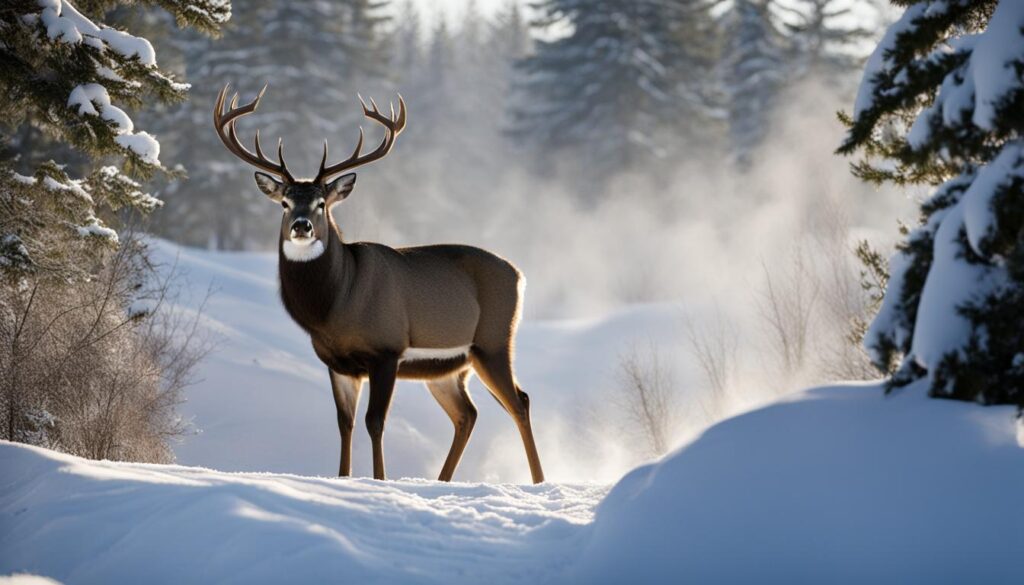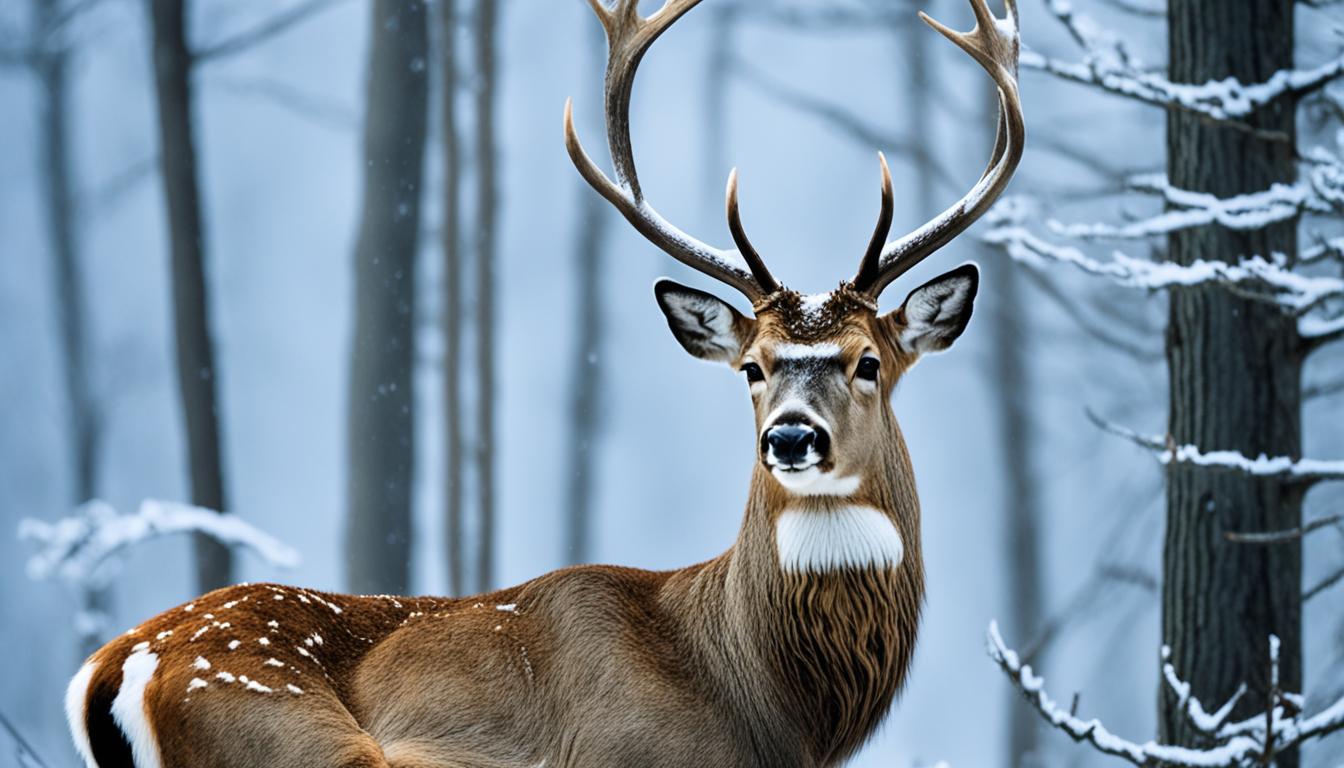Deer have remarkable abilities to endure the harsh conditions of winter. Through a combination of biological and behavioral adaptations, they navigate the cold weather with ease. Understanding these survival techniques can shed light on the resilience and resourcefulness of these magnificent creatures.
Content Highlights
ToggleKey Takeaways:
- Deer grow a heavier winter coat and layer of fat to insulate themselves.
- Their digestive system slows down, allowing them to conserve energy.
- Deer exhibit changes in their metabolism, blood flow, and body size to adapt to colder temperatures.
- They use their hooves to dig through snow to access grass, and browse on twigs and evergreens for additional food sources.
- Deer seek thermal cover in dense conifer stands and bedding areas to protect themselves from the cold and wind.
Strategies for Deer Survival in Winter
Deer exhibit certain behaviors that help them survive winter. When the ground is covered in snow and ice, they use their hooves to dig through the snow and access the grass beneath. They also browse on twigs and evergreens for additional food sources.
Deer seek out thermal cover, such as dense conifer stands and grassy areas, to protect themselves from the cold and wind. They will also bed on southern-facing slopes during the day to capture the sun’s warmth. Additionally, deer gather in groups and lie down during storms to stay protected from the elements.
To summarize, here are some key winter habits of deer and snow survival tips:
- Use hooves to dig for grass beneath the snow and ice.
- Browse on twigs and evergreens for additional food sources.
- Seek out thermal cover, such as dense conifer stands and grassy areas.
- Bed on southern-facing slopes during the day to capture the sun’s warmth.
- Gather in groups and lie down during storms to stay protected.
By employing these strategies, deer are able to navigate through the challenges of winter and increase their chances of survival.

Deer Survival Example
“During a heavy snowstorm, a group of deer huddled together under the cover of dense conifer trees. They took turns digging through the snow and browsing on twigs to find food. Bedding on a southern-facing slope, they soaked in the warmth of the winter sun. Their cooperation and adaptive behaviors allowed them to endure the harsh winter conditions successfully.”
| Winter Survival Strategy | Description |
|---|---|
| Using hooves to dig for grass beneath the snow and ice | Deer rely on their sharp hooves to dig through the thick layer of snow and ice to access the grass beneath. |
| Browsing on twigs and evergreens for additional food sources | When their usual food sources are scarce, deer turn to twigs and evergreens to supplement their diet. |
| Seeking out thermal cover | Dense conifer stands and grassy areas provide thermal cover, shielding deer from the cold winds of winter. |
| Bedding on southern-facing slopes during the day | Deer take advantage of the sun’s warmth on southern-facing slopes, keeping themselves cozy during the day. |
| Gathering in groups and lying down during storms | When storms hit, deer gather in groups and lie down, minimizing exposure to harsh weather conditions. |
Improving Deer Habitat for Winter Survival
Landowners play a crucial role in enhancing the habitat for deer to ensure their survival during winter. By implementing various strategies, they can create an environment that offers the necessary resources for deer to thrive. One of the key steps is providing high-quality fall food sources, such as food plots, which enable deer to build up their fat reserves before the harsh winter sets in.
In addition to food sources, creating or enhancing deer bedding areas in mature forests with a southern exposure is essential. These areas not only offer thermal cover, protecting deer from the cold winds, but also provide additional browse for sustenance. Thermal cover can be found in dense conifer stands or grassy areas where deer can seek refuge.
Another effective practice is implementing timber stand improvement techniques, such as selective tree cutting or hinge cuts. These practices increase the availability of browse for deer during winter. By strategically managing the forest, landowners can provide a diverse range of browse, ensuring that deer have access to the necessary nutrition to withstand the challenging winter conditions.
Improving deer habitat is critical, as it attracts and supports more deer on the land, enhancing their chances of survival during the unforgiving winter months. By implementing these habitat improvements, landowners not only contribute to the well-being of deer but also witness the positive impact it has on the overall ecosystem.
- California Deer Hunting Guide: Seasons, Rules, Permits, and More - 26 June 2024
- Arkansas Deer Season 2024 [Schedules, Licenses, Bag Limits & More!] - 26 June 2024
- 2024 Arizona Deer Season New Dates & Rules! - 25 June 2024




